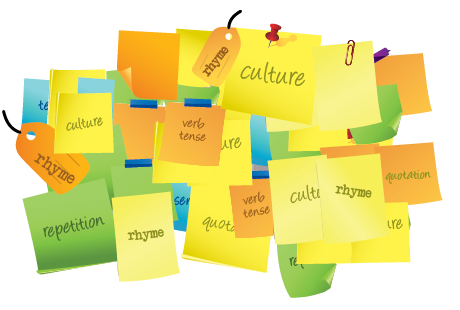Alexander Lorenz, University of Texas at Austin
Not only does the use of eComma in my German classroom encourage students to take learning into their own hands, but it also gives students the opportunity to learn from one another in a low-risk online environment.
Inductive grammar teaching
For this exercise, I used eComma to teach grammar inductively. This method of teaching Grammar is described by Ellis (2006) as an approach that draws learners’ attention to a specific grammatical form to help them understand it metalinguistically and process it in comprehension and production, in order to finally internalize it.
The major drawback to such an approach is that, in a classroom that is largely based on communication, it is difficult to find time for students to analyze large amounts of texts inductively. However, putting these texts online in eComma for students to work on during their preferred times in an asynchronous online environment provides more time for in-class communication.
The assignment
The learning objective in this online exercise was to figure out the complex nature of adjectives and how adjective endings work in the German language. The exercise asked the students to figure out the main ideas of a German text that was filled with adjectives. After students commented on the main topics of the text, they were asked to comment on unknown words. Then, students were asked to locate the adjectives in the text, try to notice differences between them, look closely at the words surrounding the adjectives and comment on their observations. Students were not constrained to what they could comment on but they were encouraged to write about how these endings change the meaning of words or entire sentences. Finally, I asked students to come up with a possible rule about adjective endings using their own words.
Student annotations
During the online session, students made hypotheses, asked questions, and answered each other’s questions. They helped each other understand adjective endings, as in this example of an exchange between two students.
Student A: Berg is a masculine noun. I’m not sure why “eine” is used in this case. Is the verb influencing the indirect article or is it the fact that two adjectives in a consecutive row alter the indirect article?
Student B: It is not “Berg” but “Burg” meaning fortress or castle. This is a feminine noun, with “ein” preceding it the endings will be with an e making it “eine.”
Conclusions about the activity
After the exercise, I asked students to fill out an online survey about their perceptions of using online annotation for language learning. Many students mentioned that they valued the convenience of working from home while still being able to collaborate outside of the traditional classroom setting.
“We live in the information age where technology is essential and we must… factor language into the equation. Having group discussions about the text is wildly important, so we can discuss its actual meaning with [sic] one another.”
I was curious about whether the students’ active cognitive engagement in the online environment prepared them better to use the grammar in class. Most students indicated that the knowledge gained in the online environment helped them in understanding unclear concepts.
“I was able to take a deeper look in a different context about how particular grammar features played into the language.”
Most students pointed out that collaborative online exercises have a future in the language classroom. They mentioned that commenting and receiving comments encouraged them to think more deeply about what was being discussed and led them to learn from and teach each other.
“Some comments were quite insightful and picked up on things I necessarily didn’t even pick up on. With those perspectives, I was able to incorporate them with my own to develop a new encompassed meaning of the text.”
Students also listed other advantages, such as the ease of accessibility and the ability to practice more.
“It gives us an additional platform in which to study the language, and as a result of this our horizons are expanded…. we are able to gain a grasp on the language as a whole.”
Future applications of eComma
This project shows only one way to use annotation and online collaboration in the L2 classroom. Analyzing the grammar of a foreign text in a collaborative online setting in order to internalize certain grammatical concepts might require students to go beyond what they are used to. Recognizing patterns, solving problems, and building hypotheses depending on their observations enhances learning autonomy.
A well-designed assignment forces students to play an active part in the online environment and it prevents students from becoming isolated. Students can use these skills to succeed in other areas of language learning as well as for other tasks outside of the second language classroom.
The teacher experience with eComma is positive. It gives me an idea about where my students are in their understanding of language. Their meta-language shows me what language to use while teaching. The assignment is a self-sustainable system once it’s set up and it is easy to incorporate in any curriculum with any book, and for different learning objectives. For instance, I’ve used the tool with cultural texts where I asked students to comment on unknown words and ideas and insert hyperlinks to external webpages to contextualize their ideas.
With social media having such a major impact on our lives, we as instructors must find ways to use this impact positively for learning. eComma has the potential to help us with that.





